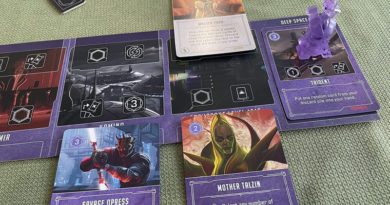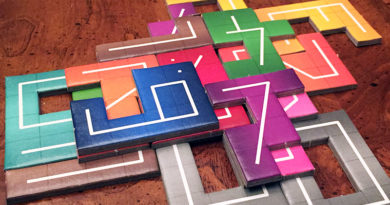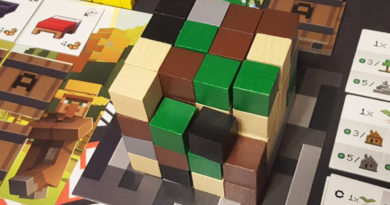Four Corners board game review
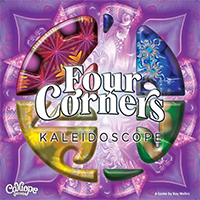
Growing up in Utah, I often heard about the Four Corners. That’s because the Four Corners is the place where the corner borders of Utah, Colorado, Arizona, and New Mexico all meet. In fact, it’s the only location in the United States where four states meet.
Friends would talk about going to the Four Corners where they could be in all four states at the same time by placing their hands and feet in each state (or just laying on the crosshair mark).
So even though that image is firmly planted in my mind when I hear “Four Corners”, the latest game from Calliope Games, named Four Corners, has nothing to do with any of those states.
Instead, the Four Corners board game is a puzzle type game where players race to complete their dealt goals before their opponents complete theirs. They do so by adding and twisting tiles to create different patterns in the play area.
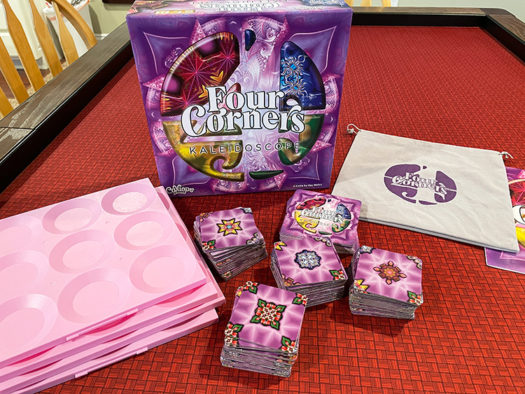
How to play Four Corners
Four Corners is a simple game to understand and play. Each player starts the game with 3 random Goal cards which they keep secret. The first player to accomplish their 3 goals wins the game.
Players score a Goal by either creating a sequence of 4 identical center images that match the image on their card or completing their full image from the corners of 4 adjacent tiles.
After drawing Goal cards, all the board tiles are shuffled and placed in face down stacks. The top tile is drawn and placed in one of the 4 center squares of the game board.
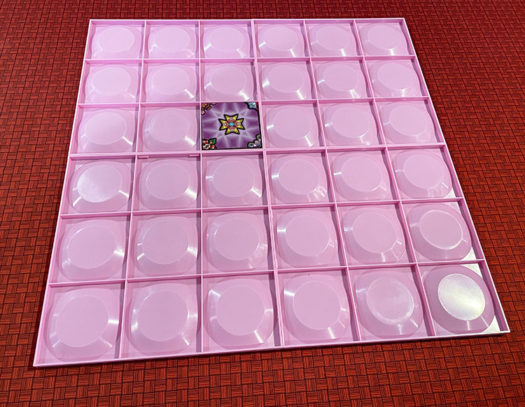
Each board tile shows a large center image and various partial images in each corner. There are also a handful of special tiles in the deck. A player may only keep one special tile in their hand at a time. If they’ve drawn more than one special tile, they must discard one and draw another tile.
Each player draws 3 board tiles to form their hand and the first player takes their turn.
On a player’s turn, they take 1 of the following actions:
- Place a tile
- Rotate 2 tiles
- Exchange 2 tiles
- Draw a new Goal
1. Place a tile from their hand
The player places a tile from their hand next to one or more tiles already in play (orthogonally or diagonally). Or the player may replace an existing tile on the board with one from their hand. The newly placed tile must have either the center image or one of the corner images match that same element on a neighboring tile.
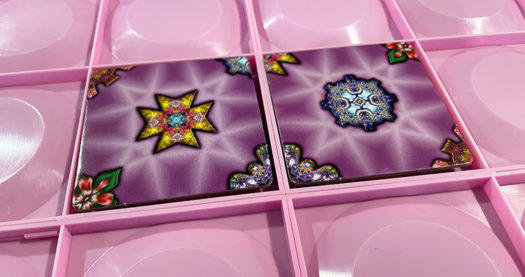
2. Rotate 2 tiles 90 degrees on the board
The player rotates exactly 2 tiles on the board 90 degrees in either direction. If the player has a Rotate 180 degree Special Action tile in their hand, they may discard it to rotate one of the two tiles 180 degrees instead of 90 degrees.
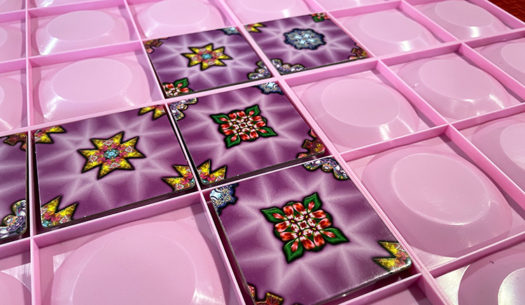
3. Exchange 2 tiles on the board
The player exchanges the positions of 2 tiles on the board, maintaining their original orientation. Both exchanged tiles must match the Center Image or a Corner Image of a neighboring tile in their new positions. If the player has a Double Swap Special Action tile in their hand, they may discard it to perform a second swap, using the same or different tiles.
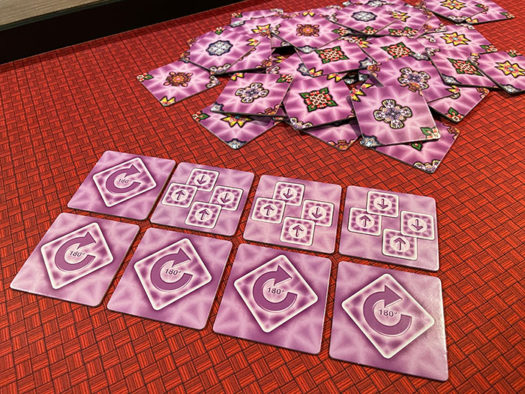
4. Draw a new Goal card
The player draws a new Goal card from the deck and then discards one from their hand. Players may never end a turn with more goal cards than they had at the start of their turn.
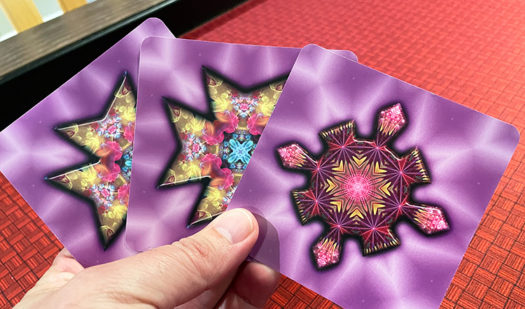
Scoring a Goal
Players can score a Goal during their turn in one of two ways:
- Four Corners – Creating an intersection of four matching image corner types.
- Iconic Sequence – Creating a four-in-a-row series of tiles with identical center images neighboring one another in any direction (orthogonally or diagonally).
After scoring a Four Corners Image, the player must break apart the image by turning each of that image’s four tiles once in either direction (90 degrees). After scoring an Iconic Sequence, the player must break it apart by changing two of the center images within the sequence.
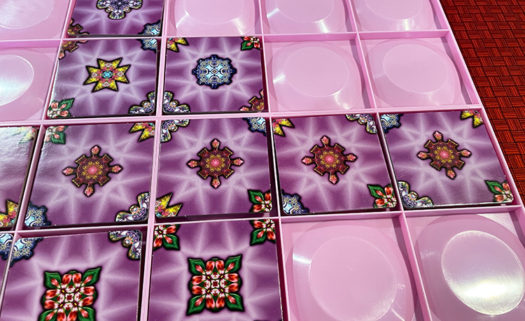
Players can not score Goals on other players’ turns.
At the end of their turn, players draw back up to 3 tiles in their hand. If they scored a goal on their turn, they do not draw a new goal card.
Once a player scores a 3rd Goal, they win the game.
There are also ways to play the game in teams as well as solitaire.
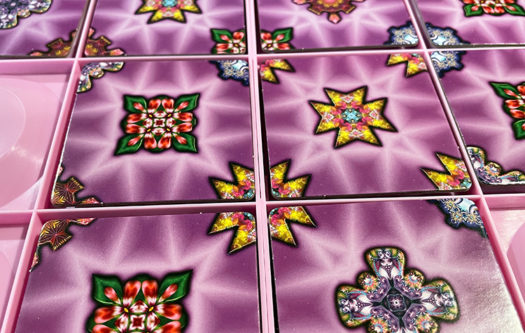
Can the whole family enjoy Four Corners?
Four Corners is definitely a board game the whole family can enjoy playing together. The rules are simple to remember and the game play is engaging with interesting choices throughout.
One thing we like in family games is quick turns so players aren’t waiting too long for their next turn. Since players can only take one action on their turn, the game keeps flowing nicely and there isn’t a lot of downtime. However, that changes a little bit over the course of the game.
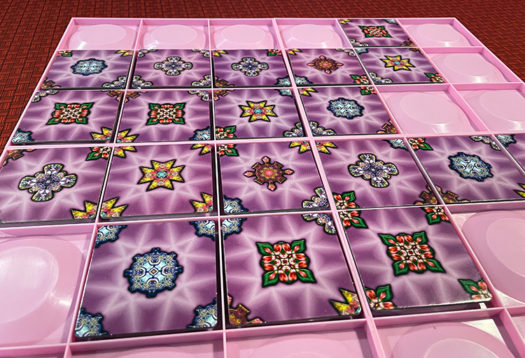
The first few turns of the game go by pretty quickly. However, as the board fills in with more tiles, the amount of options possible on a turn increases as well. Which means that players’ turns will start taking longer as they assess which move will be their best option.
Being able to only take one action on your turn though is also a mixed bag. That’s because you’re going to want to do more than one action to reach your goals.
If you can’t make a move to complete your goal, what move can you make that will get you a step closer without setting up your opponents? But, you don’t know which patterns your opponents are going for. So you’ll have to take your best guess and hope they don’t mess up your own plans.
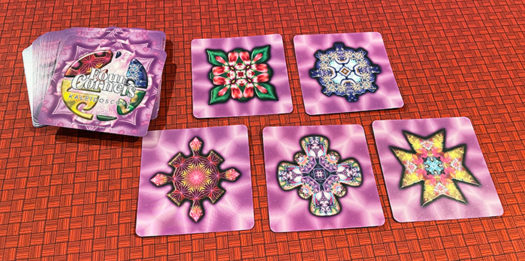
Since the board state will change before it gets back to your turn, you can’t plan out a long strategy very well. You can hope, but be ready to adjust when they inevitably mess up some of your plans.
Which means the balance of luck vs strategy leans toward the luck side of the equation in Four Corners.
Since Four Corners is a lighter game though, that amount of luck fits fine.
Another element we want to highlight is the board itself. It’s a great board for this type of game play because it’s easy to twist the tiles.
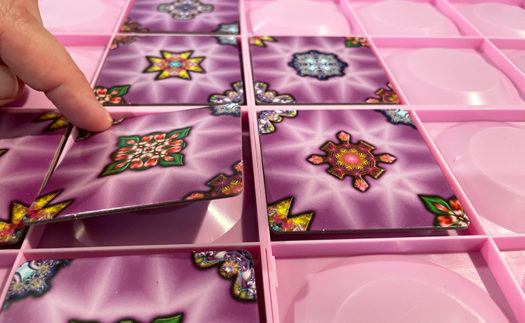
With all the tile twisting, shifting, and swapping that happens on almost every turn, it’s important that moving one tile doesn’t destroy the rest of the tile grid. And Calliope Games has created an awesome board for just that purpose. It’s super easy to tip the corner of a tile and twist it or pick it up to swap.
Four Corners also comes in 2 themed editions: Kaleidoscope and Galaxy. We chose the Kaleidoscope edition because we like the style of those patterns. But we know many others are going to love the Galaxy edition for its design as well. Choose the one you’ll like best.
How does Four Corners score on our “Let’s Play Again” game meter?
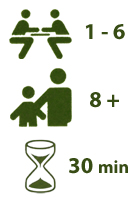 Four Corners scores well on our “let’s play again” game meter because it’s a light and relatively quick game to play. Set up is a breeze and you’re off an playing a second time.
Four Corners scores well on our “let’s play again” game meter because it’s a light and relatively quick game to play. Set up is a breeze and you’re off an playing a second time.
Plus the game board always ends up super colorful and it’s fun to look at.
Grab a copy of Four Corners for your family.



